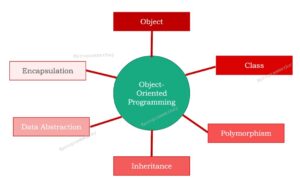Right Shift and Unsigned Right Shift or Zero Filled Right Shift both are Bitwise operators and work only on integer types. It works with the bits of an integer type values which is typical of 32 bits.
Difference between right shift and unsigned right shift or Zero filled right shift
| RIGHT SHIFT | UNSIGNED RIGHT SHIFT |
|---|---|
| It shifts all bits of a binary number to the right as per the mentioned number of times | It shifts all bits of a binary number to the right by filling zeros at the most significant bit as per the mentioned number of times |
| Each time when the right shift takes place it divides the binary number by 2, ignoring the remainder | It works by filling zeros on the leftmost most side in the binary representation of an integer |
| It preserves the sign of negative number or sign extension | It doesn't preserve such sign extension |
| Most significant bit or leftmost bit filled with previous value in order to maintain signed extension to represent the given integer in positive or negative. if it is one it is negative and if it is zero then it is positive | Most significant bit or leftmost bit filled with 0's, no matter what the initial value was. therefore, it is unsigned shift |
| It is declared using ">>" symbol. Syntax, num >> n_times | It is declared using ">>" symbol. Syntax, num >>> n_times |
| It is used to represent a numeric value | It can be used in many situations such as at the time when we work with pixel-based values |
Java program to show the working of right shift and unsigned right shift
public class BitwiseOperatorExample {
public static void main(String[] args) {
int val = -3;
int result;
System.out.println("Input = " + val);
result = val >> 2;
System.out.println("Right Shift = " + result);
result = val >>> 2;
System.out.println("Unsigned Right Shift = " + result);
}
}Output:
Input = -3 Right Shift = -1 Unsigned Right Shift = 1073741823
Working of Right Shift and Unsigned Right Shift With Same Input
Right Shift

Unsigned right shift or Zero filled right shift



